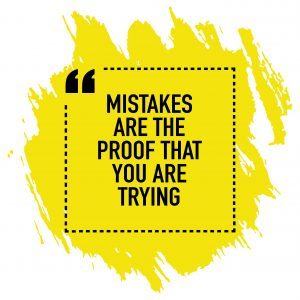0
You have 0 items in your cart

Some roles are easy to decode while others harbor more mystifying precincts, such as the difference between a leader and a manager. Most people believe that certain individuals are born leaders. Others argue that one learns how to become a leader. Irrespective of common tenets, leaders possess certain characteristics that seem to naturally put them in a locus where others revere them.
 It might be erroneous to focus on classifying leaders and managers as two discrete entities. Both terms suggest positions of preeminent responsibility for others. Individuals in these posts exude different degrees of management and leadership aptitudes, the comparative blend of which defines their capacity to excel in their area. At the most elementary level, a leader is someone who sets direction, builds an inspiring vision, and influences others towards the achievement of a goal. A manager is someone who is in charge of a group of tasks, a business or a department.
It might be erroneous to focus on classifying leaders and managers as two discrete entities. Both terms suggest positions of preeminent responsibility for others. Individuals in these posts exude different degrees of management and leadership aptitudes, the comparative blend of which defines their capacity to excel in their area. At the most elementary level, a leader is someone who sets direction, builds an inspiring vision, and influences others towards the achievement of a goal. A manager is someone who is in charge of a group of tasks, a business or a department.
Management concentrates on enactment done by people or machines and clustered into tasks, duties, and responsibilities. Leadership concentrates on encouragement, stimulation, and motivation of people. More specifically, the manager as a manager is a coherent, consulting, tenacious, reliable, diagnostic, significant, and critical individual who uses a position of power to accomplish things; the manager as a leader is an inspiring, realistic, fervent, visionary, and enthusiastic individual who uses personal position to accomplish things.

A lot of sentiments have been speckled on what style of leadership makes a great leader. From a viewpoint, it would be veracious to say that leadership styles vary from person to person. Two of the most common leadership styles are people oriented and system oriented. Each of these styles has its own set of characteristics. But which one is superior to the other? Here is a breakdown.
System oriented leaders focus on getting tasks done in order to achieve set goals or meet certain performance standards. They are generally less bothered by the idea of interacting with employees, and more bothered with finding solutions to meet goals. People-oriented leadership focuses on the fulfillment, inspiration, and broad-spectrum welfare of workers. This style of leadership centers on collaboration and teamwork by fostering constructive relationships and outstanding communication. These models are often likened to each other, as they yield varying results under different situations. However, system oriented leadership tends to suffer motivation and retention glitches since they forget that the most dynamic asset within the organization arsenal is the employee.
 People-oriented leaders understand that the workplace can be a productive place when they cultivate a positive environment. They prioritize on the well-being of individual employees by installing a distinct culture, creating a non-competitive atmosphere, and offering incentives. Individual battles, disappointments, bitterness, and monotony can have adverse effects on productivity levels of a company. To avoid these setbacks, it is imperative to position employees first.
People-oriented leaders understand that the workplace can be a productive place when they cultivate a positive environment. They prioritize on the well-being of individual employees by installing a distinct culture, creating a non-competitive atmosphere, and offering incentives. Individual battles, disappointments, bitterness, and monotony can have adverse effects on productivity levels of a company. To avoid these setbacks, it is imperative to position employees first.
A leader with strong people skills can leverage analytical abilities of employees far more efficiently. Through focus and care, employees feel a part of the company. Actual team productivity is realized from people-oriented leadership than from system-oriented leadership. It has also been hypothesized that groups appreciate and recognize their leaders more when they feel a sense of belonging and inclusiveness.
Solid people skills embody the spirit of leadership. You should be able to relate to others the same way they relate to you. This requires that you get by with those who may not necessarily resonate with you. The best way you can flourish as a leader is to earn deference. In solidifying people’s skills, it is vital to be wary of what matters to your followers. Successful leaders understand that other people’s goals are just as important as their own. As such, they make time for everybody cultivating an atmosphere of trust and transparency.
The tasks of the Leader is to get his people from where they are to where they have not been.

Happy employees perform above and beyond their projected levels. When employees are happy, they are more likely to be betrothed, yet many managers regularly serve to renounce that happiness. Instead, they focus on measuring the volume of work done or the amount of time spent working. They are routed in devising strategic and tactical plans with little concern on the effect these changes have on the people in the organization. Knowing that managers routinely interrupt employee happiness, they ought to knuckle down to know how employees are feeling and take actions to lift morale.
Employee satisfaction and productivity are some of the main elements for success. Happiness can be measured through an assortment of ways including questionnaires, surveys, calendar mood board or feedback. Regardless of how it is measured, it needs to be done more regularly than most managers take the time to.
 Great leaders concentrate on ensuring that employees are happy. They are an encouragement to others. They desire to help each person in the organization to succeed in what they do. It is imperative to remember that every individual is unique and how you make them happy requires that you have an understanding of their goal mouths and aspirations. Happiness is at a level beyond regular acquaintance. It requires more than just trailblazing to be able to reverberate with a person’s specific needs.
Great leaders concentrate on ensuring that employees are happy. They are an encouragement to others. They desire to help each person in the organization to succeed in what they do. It is imperative to remember that every individual is unique and how you make them happy requires that you have an understanding of their goal mouths and aspirations. Happiness is at a level beyond regular acquaintance. It requires more than just trailblazing to be able to reverberate with a person’s specific needs.
Happy employees customarily do their best. Boosting and upholding employee self-drive does not have to be affluent at all. Any decent rewards such as day offs could serve as an incentive. Also taking the time to let employees share in the success of the organization will undoubtedly raise their happiness levels. A happy business is a prosperous business.
Disengaged managers lead by declaration. They craft rules and set goals in isolation. In a world where workforce engagement has been incessantly applauded, it is high time to ruminate on engaged leadership. Managers fail to engage with their employees because they spend all of their time supervising day-to-day affairs rather than investing time in being attached to their teams.
 There are many instances when managing daily tasks utilizes computers and other technologies as indirect tools of communication as opposed to face-to-face communication. This impedes the prospect to get engaged in the welfare of the employees. It indicates that managers highlight management over leadership, obscuring the connection of employee engagement to the overall organizational feat.
There are many instances when managing daily tasks utilizes computers and other technologies as indirect tools of communication as opposed to face-to-face communication. This impedes the prospect to get engaged in the welfare of the employees. It indicates that managers highlight management over leadership, obscuring the connection of employee engagement to the overall organizational feat.
Engagement is a leadership responsibility. To become an effective forerunner, it is imperative to be involved. The fact that most engaged leaders are products of initial involvements and profound principles means that engagement won’t happen meteorically. It is certainly not a matter of scanning through a checklist. But there are steps that managers can take to be more engaged with their employees and over time to attain heights of quality, productivity, and efficiency that can only result from highly engaged leaders.
 Let your employees know they may pliable discuss workplace issues with you. Clear lines of communication enable consistency when interacting with senior management or down the hierarchy to managed workforce. Communication should not just mean talking. Part of excellent communication is listening to the concerns of your employees. Give them the attention they deserve and keep an open mind to their problems. Probe for more information. Appreciate them for taking the time to talk their minds out. Maintain confidentiality of their conversations. It is easier to build trust this way.
Let your employees know they may pliable discuss workplace issues with you. Clear lines of communication enable consistency when interacting with senior management or down the hierarchy to managed workforce. Communication should not just mean talking. Part of excellent communication is listening to the concerns of your employees. Give them the attention they deserve and keep an open mind to their problems. Probe for more information. Appreciate them for taking the time to talk their minds out. Maintain confidentiality of their conversations. It is easier to build trust this way.
 Take Responsibility
Take Responsibility
It is easy to get stuck on trivial details and blame sharing, but real leaders centre on the task at hand. Learn to take responsibility for not only the noble things but also the bad ones. Admit to your slip-ups every man makes mistakes. You cannot learn if you have not committed mistakes. Do not be disheartened if employees are not on the same page with you. By communicating and subsidizing, you are establishing engagement and concern, both essential leadership qualities.

In the current business world, individuals live in a perpetual work atmosphere with increasingly extra pressure to do more. Simultaneously, managers are striving to be exceedingly productive and realistic. Management databases can help cultivate sundry skills, but there are some leadership qualities that cannot be developed by learning about values or how to validate them. These qualities can be referred to as states of being — attentiveness, inquisitiveness, positivity, poise or open-mindedness. One specific state of being that is being adopted in organizations as a distinctive leadership quality is mindfulness.
Effective leadership requires self-knowledge and consciousness. Studies show that great leaders have devised ways to manage the constant inducement to preserve the upright health of their minds. This type of mindfulness could be better defined as a state where the brain is persistently collecting data from external and internal worlds to screen for signs of incongruities. Attention is a limited reserve and every so often comes at the expense of another thing. Because leaders see the need to perform things consistently, they need to learn to apply their attention to doing the things that matter most first.
 Mindfulness is known to help leaders become more active, clear, original, and variation resistant. It gives them the time to pause and reflect on decisions. At all times, mindfulness helps people choose to adjust and calm down so that the right action can be taken. It allows them to heed the small inner voice that is often diluted by feelings and opinions. This yields self-awareness, greater empathy for self, energy management, better listening skills, strong engagement with others and adaptation to change among many other benefits. Mindful leadership can improve the work environment in elegant and unconcealed ways making it a budding ground for positive change.
Mindfulness is known to help leaders become more active, clear, original, and variation resistant. It gives them the time to pause and reflect on decisions. At all times, mindfulness helps people choose to adjust and calm down so that the right action can be taken. It allows them to heed the small inner voice that is often diluted by feelings and opinions. This yields self-awareness, greater empathy for self, energy management, better listening skills, strong engagement with others and adaptation to change among many other benefits. Mindful leadership can improve the work environment in elegant and unconcealed ways making it a budding ground for positive change.
Leaders become great, not because of their power, but because of their ability to empower others.
Becoming a virtuous leader does not involve a miracle based on cheats and shortcuts. It does not include emulating a historical model. Rather, it is based on who you are and what matters most to you. When you figure out your personal concerns, it will be much easier to live your values. Everything always comes down to doing the best you can in every situation. Although this may sound quite guileless, it is much more demanding to pull off in reality.
 Values-driven leaders communicate organizational values that inform members how to conduct themselves in order to fulfill the vision of the company. Leaders should focus on the core values — the enduring principles that capture the strength of the company. Talking about these values in a way that links with employees values helps them identify strongly with business’ mission.
Values-driven leaders communicate organizational values that inform members how to conduct themselves in order to fulfill the vision of the company. Leaders should focus on the core values — the enduring principles that capture the strength of the company. Talking about these values in a way that links with employees values helps them identify strongly with business’ mission.
Doing the correct thing is a lifetime practice. For employees to resound company values, leaders must lead by example and communicate the values on a constant basis. The efficacy of the values depends on how well the organization personifies them. Core values are likely to remain unwavering in the face of shifting trends since they embody the depth of the organization.
But everything is easier said than done. Many people talk too much but do too little. If you want to be a great leader, start acting. Work out plans. It is always a great idea to not only echo core values but also incessantly raise the bar to achieve merit in all areas. Core values reflect the company’s principles and purposes. Every company has its own discrete set of values indicating what the company stands for and how it hopes to achieve the feat. Before allocating responsibilities, make sure that you are acquainted with the core objectives and ensure that the employees are aware of how their exertions align with company’s vision.
 Most people tend to think that effective teamwork is achieved when individual contributors labor altruistically towards a mutual goal. While this is a fundamentally vital instrument to operational success, managers have often undermined this fragment. As a leader, it is upon you to find ways to bring out the strength of each and every member of a group so that the overall output can be realized. Create an environment where employees perform their job functions as a team.
Most people tend to think that effective teamwork is achieved when individual contributors labor altruistically towards a mutual goal. While this is a fundamentally vital instrument to operational success, managers have often undermined this fragment. As a leader, it is upon you to find ways to bring out the strength of each and every member of a group so that the overall output can be realized. Create an environment where employees perform their job functions as a team.
Teamwork involves the interaction of individuals to accomplish a conjoint purpose where the interests of individuals are subordinate to group unity and combined efficiency. Nurturing productive environments where teamwork thrives requires that leaders hone communication and interpersonal skills. By allowing everyone to participate, individual employees feel a sense of commitment and veneration to their leaders.

Personal entropy is the level of dysfunction that is spawned as a result of fear-driven energy. Fear based actions arise from both conscious and subconscious beliefs that people harbor about their deficits. Almost everyone has some level of personal entropy; the trick is to dominate it before it becomes counterproductive.
Managers often find their personal entropy showing up in the organization. This undermines productivity, reduces commitment levels, and lowers engagement. To gain trust, they need to operate with legitimacy and truthfulness. They must show that they care about their people and are mindful of their welfare.
Keep workers motivated while embracing adjustment and new information. Take on fresh challenges. Be confident. Show your employees that you are not intimidated by new roles or projects. Do not try to emulate everyone else. Be unique and delighted about who you are and how you carve your specific road to success.
Ensure that everyone in the organization is enlightened of the business goals and ethics. It is much easier to deal with an informed workforce. Dealing with personal entropy also involves crafting a culture of authentic failures. Authentic failures are erudition plugs that enhance healthier decision-making when mistakes are made.
 Being optimistic allows you to overcome personal entropy. Always know that you are up to the task. Otherwise, you would not be in a position of power in the first place. With that in mind, you are in control of every emotion in your life. Negativities are bound to arise, but you have the choice to either pin them down or let them overtake you. It is easier to think positive when you have a positive attitude towards challenges and experiences.
Being optimistic allows you to overcome personal entropy. Always know that you are up to the task. Otherwise, you would not be in a position of power in the first place. With that in mind, you are in control of every emotion in your life. Negativities are bound to arise, but you have the choice to either pin them down or let them overtake you. It is easier to think positive when you have a positive attitude towards challenges and experiences.
When managers engage in considerate and credulous behaviors, employees are encouraged to be responsible and accountable for their work. They gain a sense of commitment to anchor their efforts towards the right direction so as to boost performance. In this way, personal entropy diminishes while employee engagement flourishes.
If your actions inspire others to dream more, learn more, do more and become more, You are a Leader.
This Privacy Policy describes how SmartMinds Enterprise OÜ (“SmartMinds”, “we”, “us” or “our”) handles information about yourself that you may provide us with through your use of the Site or Service (“Personal Information”) and should be read along with our Terms of Use posted here, and all other operating rules and additional terms and conditions published on our Site.
SmartMinds is committed to keeping your information secure and managing it in accordance with our legal responsibilities under privacy and data protection laws where we operate. SmartMinds uses your Personal Information only in accordance with this Privacy Policy and Applicable Law. SmartMinds does not sell your Personal Information to third parties. Any capitalized terms not defined in this Privacy Policy are defined in the Terms of Use.
We employ the use of cookies. By using SmartMinds‘s website you consent to the use of cookies in accordance with SmartMinds’s privacy policy.
Most of the modern day interactive web sites use cookies to enable us to retrieve user details for each visit. Cookies are used in some areas of our site to enable the functionality of this area and ease of use for those people visiting. Some of our affiliate / advertising partners may also use cookies.
Unless otherwise stated, SmartMinds and/or it’s licensors own the intellectual property rights for all material on SmartMinds All intellectual property rights are reserved. You may view and/or print pages from https://smartminds.one for your own personal use subject to restrictions set in these terms and conditions.
You must not:
We will approve link requests from these organisations if we determine that: (a) the link would not reflect unfavourably on us or our accredited businesses (for example, trade associations or other organisations representing inherently suspect types of business, such as work-at-home opportunities, shall not be allowed to link); (b)the organisation does not have an unsatisfactory record with us; (c) the benefit to us from the visibility associated with the hyperlink outweighs the absence of SmartMinds; and (d) where the link is in the context of general resource information or is otherwise consistent with editorial content in a newsletter or similar product furthering the mission of the organisation.
These organisations may link to our home page, to publications or to other Web site information so long as the link: (a) is not in any way misleading; (b) does not falsely imply sponsorship, endorsement or approval of the linking party and its products or services; and (c) fits within the context of the linking party’s site.
If you are among the organizations listed in paragraph 2 above and are interested in linking to our website, you must notify us by sending an e-mail to Please include your name, your organisation name, contact information (such as a phone number and/or e-mail address) as well as the URL of your site, a list of any URLs from which you intend to link to our Web site, and a list of the URL(s) on our site to which you would like to link. Allow 2-3 weeks for a response.
Approved organizations may hyperlink to our Web site as follows:
No use of (name)’s logo or other artwork will be allowed for linking absent a trademark license agreement.
Without prior approval and express written permission, you may not create frames around our Web pages or use other techniques that alter in any way the visual presentation or appearance of our Web site.
We shall have no responsibility or liability for any content appearing on your Web site. You agree to indemnify and defend us against all claims arising out of or based upon your Website. No link(s) may appear on any page on your Web site or within any context containing content or materials that may be interpreted as libelous, obscene or criminal, or which infringes, otherwise violates, or advocates the infringement or other violation of, any third party rights.
We reserve the right at any time and in its sole discretion to request that you remove all links or any particular link to our Web site. You agree to immediately remove all links to our Web site upon such request. We also reserve the right to amend these terms and conditions and its linking policy at any time. By continuing to link to our Web site, you agree to be bound to and abide by these linking terms and conditions.
If you find any link on our Web site or any linked web site objectionable for any reason, you may contact us about this. We will consider requests to remove links but will have no obligation to do so or to respond directly to you.
Whilst we endeavour to ensure that the information on this website is correct, we do not warrant its completeness or accuracy; nor do we commit to ensuring that the website remains available or that the material on the website is kept up to date.
We have a 30-day Money Back Guarantee when purchasing Realized Mind, all we ask if that within the 30 days to complete the learning experience and if you truly feel you did not receive any value from the experience we are happy to refund your payment and close your account.
To the maximum extent permitted by applicable law, we exclude all representations, warranties and conditions relating to our website and the use of this website (including, without limitation, any warranties implied by law in respect of satisfactory quality, fitness for purpose and/or the use of reasonable care and skill). Nothing in this disclaimer will:
The limitations and exclusions of liability set out in this Section and elsewhere in this disclaimer: (a) are subject to the preceding paragraph; and (b) govern all liabilities arising under the disclaimer or in relation to the subject matter of this disclaimer, including liabilities arising in contract, in tort (including negligence) and for breach of statutory duty.
To the extent that the website and the information and services on the website are provided free of charge, we will not be liable for any loss or damage of any nature.
